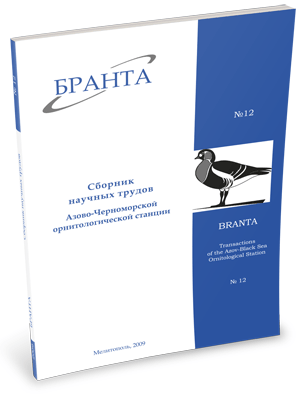
Transactions
of the Azov-Black Sea Ornithological Station



Iranian endemic Artemia urmiana in hypersaline Lake Koyashskoe (Crimea, Ukraine): a preliminary discussion of introduction by birds.
Khomenko S. V. , Shadrin N. V.
In 2004 Iranian endemic species Artemia urmiana, Gunther 1890 (Anostraca, Artemiidae) was recorded in large numbers in Lake Koyashskoe (Crimea, Ukraine; 45° 2' 4" N, 36° 11' 44" E), which is the first finding of the crustacean outside its original range. It was previously thought to be confined exclusively to the water area of Lake Urmia (NW Iran; 37° 35' 28" N, 45° 28' 24" E). Considering the distance (1,111 km) and direction (NW) of spread (Fig. 1) we speculate on the possible role of migratory waterbirds in transporting viable cysts of A. urmiana over the Black Sea based on the analysis of relevant literature and own observations. We came to the conclusion that cysts were spread to the Koyashkoe Lake during spring migration most likely by Shelduck Tadorna tadorna, Redshank Tringa totanus or Pied Avocet Recurvirostra avosetta, birds that breed in Crimea and either winter at Urmia Lake or pass it during spring migration. Feeding on Artemia during either migration or wintering period is particularly characteristic for these species. Considering the average flight speed of waders and ducks and given favorable wind conditions en route Urmia-Koyshskoe (Fig. 1) we estimate that duration of their non-stop flight between these localities could have been in the range of 23-11 hours (waders in the still air – 18-23 h, waders with assistance of tail winds – 11-13 h; ducks – 11-18 h dependent on tail winds). Given the published information on the time taken by some species of birds to fully empty digestive tract of Artemia cysts, we conclude that transport of A. urmiana cysts could have occurred as a result of a non-stop night-time hop from UrmiaLake to LakeKoyashskoe undertaken by one of the considered waterbird species. We also show that bioclimatic (Table 1) and hydrochemical conditions of the two lakes are rather similar that can allow for immediate development of nauplii in KoyashkoeLake from cysts, in case they are transported by birds arriving to Crimea early in spring.
Read the paper in a PDF file